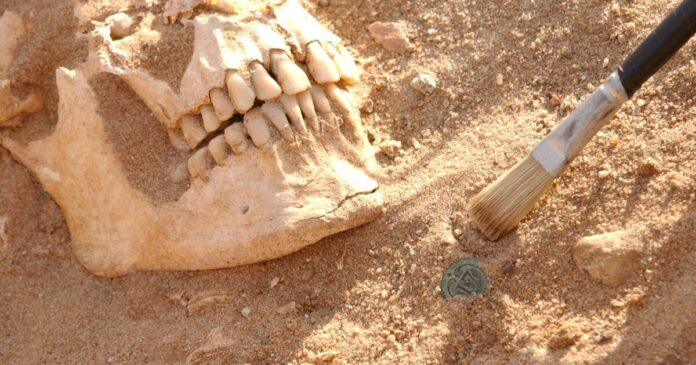One of the first events to signal the collapse of Napoleon’s reign was his crushing defeat after an invasion of Russia in 1812. Researchers have long thought that the disease typhus played a role, but modern DNA analysis paints a different picture.
On June 24, 1812, Napoleon Bonaparte led a massive army of over 600,000 troops across the Niemen River in present-day Lithuania in what has become known as his Russian Campaign. His goal was to get Russia to rejoin the embargo of Great Britain from which Tsar Alexander I had withdrawn because of the economic impact to his own empire.
By December of that year, less than 100,000 of Napoleon’s soldiers remained alive. Many had fallen from cold exposure brought on by the brutal Russian winter, while others died from starvation as a result of Russian forces carrying out a scorched earth campaign as they retreated. The other large portion of deaths was caused by disease, which until now was believed to be typhus, a lice-borne disease that thrives in unsanitary conditions such as military battlefields.
The typhus theory stemmed from the discovery of body lice on the remains of Napoleon’s soldiers along with the DNA of a bacterium known as Rickettsia prowazekii, which causes the disease. However, a new DNA analysis of the teeth of soldiers found in a mass grave in Vilnius, Lithuania failed to find any pathogens for typhus, including R. prowazekii. The analysis was part of a study led by researchers at the Institut Pasteur in Paris.
Instead, the team found two other bugs in the soldiers’ teeth: Salmonella enterica, which causes enteric fever, and Borrelia recurrentis, the cause of a disease known as relapsing fever. Enteric fever is spread through contaminated food and, like typhus, causes fever, headache and weakness. Enteric fever is also like typhus in that it is spread by lice and shares similar symptoms. Both diseases would have been deadly in the early 1800s in the absence of sanitary conditions and antibiotics.
“It’s very exciting to use a technology we have today to detect and diagnose something that was buried for 200 years,” says lead author Nicolás Rascovan.
Interestingly, the team did discover that the B. recurrentis found in the soldiers’ teeth was the same as an ancient strain found in Britain 2,000 years ago during the Iron Age. That bug must have died out soon after it ravaged the army because the strains found today all belong to a different lineage.
“This shows the power of ancient DNA technology to uncover the history of infectious diseases that we wouldn’t be able to reconstruct with modern samples,” says Rascovan.
The discrepancy between what the researchers found and the conventional wisdom regarding typhus’ impact on Napoleon’s army likely has to do with the DNA analysis tools now available to researchers. Previous studies relied on a process known as polymerase chain reaction (PCR), which amplifies small or degraded fragments of DNA, allowing scientists to analyze genetic material even from old or damaged organic matter.
In this study, the researchers used cutting-edge ancient DNA (aDNA) analysis tools to more thoroughly analyze the samples and reach their conclusion.
“Ancient DNA gets highly degraded into pieces that are too small for PCR to work,” says Rascovan. “Our method is able to cast a wider net and capture a greater range of DNA sources based on these very short ancient sequences.”
The team’s findings have been reported in the journal, Cell Press.
Source: Université de Paris Cite via Scimex


